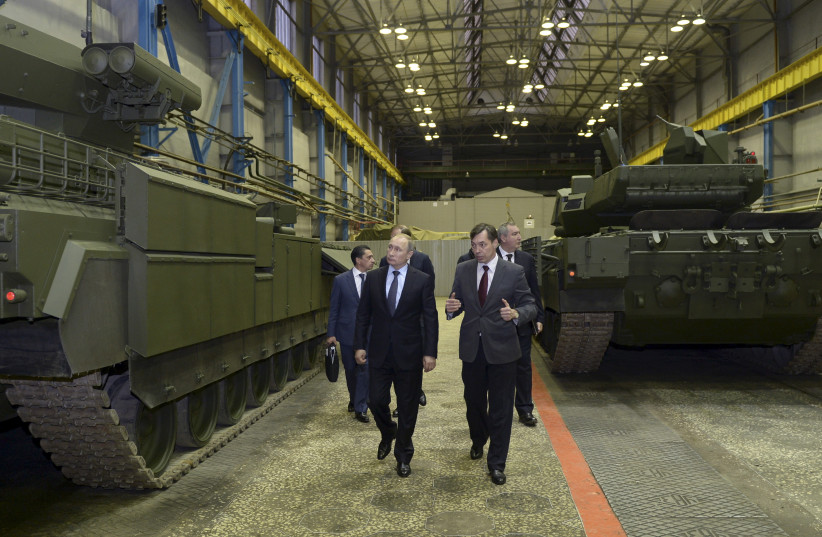The global military spending increased by 3.7% in 2022, bringing the total to $2,240 billion, the Stockholm International Peace Research Institute (SIPRI) reported. In Europe, military spending has seen the steepest rise in the last 30 years.
SIPRI released an annual report detailing the heightened levels of military spending in response to the Russia-Ukraine conflict and its global implications.
The United States, China and Russia have been largely responsible for the sharp incline, as they accounted for 56% of the global total.
Why is military spending increasing worldwide?
Military spending has grown over the last eight years, although 2022 saw the most significant rise. Europe’s spending jumped 13%, which SIPRI explains is largely due to the ongoing Ukraine-Russia War. Many countries have offered military aid to Ukraine, increasing their total expenditure, and dedicating more funds to their own militaries out of fear of Russia’s future military excursions.
‘The continuous rise in global military expenditure in recent years is a sign that we are living in an increasingly insecure world,’ said Dr Nan Tian, Senior Researcher with SIPRI’s Military Expenditure and Arms Production Programme. ‘States are bolstering military strength in response to a deteriorating security environment, which they do not foresee improving in the near future.’

‘The invasion of Ukraine had an immediate impact on military spending decisions in Central and Western Europe. This included multi-year plans to boost spending from several governments,’ said Dr. Diego Lopes da Silva, Senior Researcher with SIPRI’s Military Expenditure and Arms Production Programme. ‘As a result, we can reasonably expect military expenditure in Central and Western Europe to keep rising in the years ahead.’
Cold War-level expenditure
Central and Western European military expenditure surpassed that of 1989, when the cold war was ending, totalling $345 billion. This is a 30% increase from 2013.
Some of the countries which border Russia saw the sharpest increase. Finland, which recently joined NATO, saw a 36% increase. Lithuania saw a 27% increase and Poland saw an 11% increase.
Russia’s own military spending has estimated to have grown by 9.2% in 2022. SIPRI estimates that this would total $86.1 billion, around 4.1% of Russia’s GDP. The amount increased by 3.7% from 2021, before it began its invasion of Ukraine.
‘The difference between Russia’s budgetary plans and its actual military spending in 2022 suggests the invasion of Ukraine has cost Russia far more than it anticipated,’ said Dr Lucie Béraud-Sudreau, Director of SIPRI’s Military Expenditure and Arms Production Programme.
In response to the invasion, Ukraine’s military spending went through a significant increase. Ukraine’s military expenditure reached a total of $44 billion, which is a 640% increase from 2021 and the highest single-year increase that SIPRI has ever recorded.
Despite global increases, the United States remains the biggest military spender with expenditure reaching $877 billion in 2022. This constitutes 39% of global military expenditure but is only a 0.7% increase since 2021. The US gifted Ukraine military aid packages valued at $19.9 billion throughout 2022, 2.3% of the total US military expenditure.
China was the second biggest military spender, spending $292 billion in 2022. This was a 4.2% increase from 2021.
‘The increase in the USA’s military spending in 2022 was largely accounted for by the unprecedented level of financial military aid it provided to Ukraine,’ said Dr Nan Tian, SIPRI Senior Researcher. ‘Given the scale of US spending, even a minor increase in percentage terms has a significant impact on the level of global military expenditure.’
